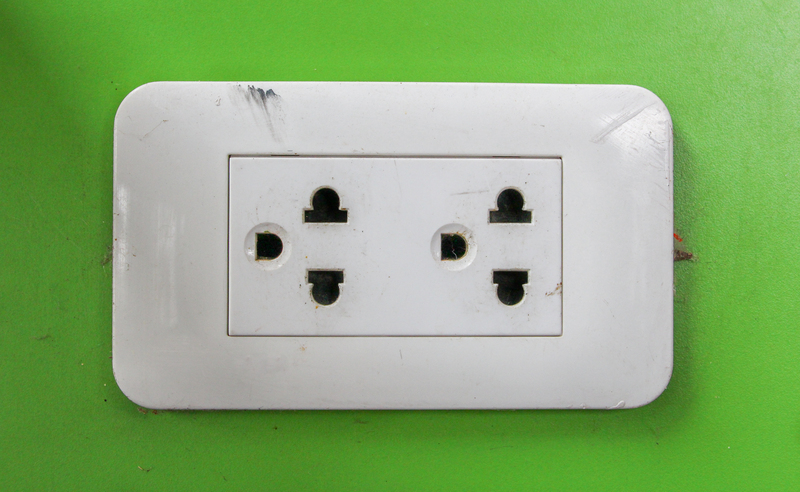Discover the Safest Ways to Wash Velvet Curtains and Prevent Damage
Posted on 02/06/2025
Discover the Safest Ways to Wash Velvet Curtains and Prevent Damage
Velvet curtains exude timeless elegance and luxury in any space, but cleaning them can be a daunting task. Mishandling can result in crushing, fading, or irreparable damage to the precious fibers. If you own a set of these beautiful drapes, it's essential to know the safest ways to wash velvet curtains and prevent damage. In this comprehensive guide, we'll explore the best cleaning methods, practical tips, and crucial precautions to ensure your velvet remains plush and pristine for years to come.

Understanding Velvet: Fiber Types & Why Special Care Is Needed
Before delving into cleaning methods, it's vital to understand what makes velvet unique. Velvet is characterized by its dense, soft pile of cut fibers, which can be made from various materials including cotton, silk, polyester, or a blend. The pile is what gives velvet its signature softness and sumptuous appearance. However, the delicate structure of velvet fibers demands meticulous care during washing.
- Cotton velvet – durable but sensitive to water and tends to shrink if not handled carefully.
- Silk velvet – luxurious and lustrous, but extremely delicate and sensitive to moisture.
- Polyester or synthetic velvet – more durable and can often tolerate gentler machine washing cycles.
Improper cleaning can result in:
- Fiber matting or crushing
- Water stains
- Color fading
- Misshapen or shrunken fabric
Hence, understanding your velvet's material is the first step in discovering the safest way to clean velvet curtains without causing damage.
How to Identify the Fiber Type Before Washing Velvet Curtains
The label on your curtains is your guide. Always check the manufacturer's care label for recommended cleaning instructions. If the label is missing or unreadable, perform a burn test (with caution!) or consult a textile professional.
- For natural fibers like silk or cotton: Dry cleaning is typically safest.
- For synthetic velvet: Techniques such as hand washing or gentle machine washing may be possible.
Key Takeaway:
Always test a small, inconspicuous area of your velvet curtain before committing to a full wash.
The Best Ways to Wash Velvet Curtains Without Causing Damage
Let's break down the safest, most effective techniques for washing velvet curtains and keeping them looking their best:
1. Dry Cleaning: The Gold Standard for Washing Velvet Curtains
- Why It's Safe: Professional dry cleaning uses specialized solvents and gentle handling to preserve the pile and color of velvet.
- Recommended For: Silk, cotton, rayon, or unmarked velvet curtains.
- How Often: Every 1-2 years, or when visibly dirty.
Tip: Always choose a reputable dry cleaner experienced in handling luxury fabrics like velvet.
2. How to Hand Wash Velvet Curtains at Home
Not all types of velvet can be hand washed, but synthetic velvet curtains, and those specifically labeled "hand-washable," can often be safely cleaned at home. Here's how:
- Step 1: Fill a large basin or bathtub with cold or lukewarm water. Avoid hot water, which can shrink or distort velvet.
- Step 2: Add a small amount of gentle laundry detergent (look for a formula specifically for delicates).
- Step 3: Gently submerge the curtains, swirling them softly with your hands. Do not wring, twist, or rub the fibers harshly as this can crush the pile.
- Step 4: Let the curtains soak for no more than 15-20 minutes.
- Step 5: Drain the water and rinse thoroughly with fresh, cold water until all soap residue is gone.
- Step 6: Gently press (don't wring!) to expel excess water. Lay flat on a clean towel and roll it up to blot away more moisture.
Hand washing is gentle but should only be attempted if you are sure of your velvet's composition.
3. Can You Machine Wash Velvet Curtains?
Most velvet is too delicate for regular machine washes. However, certain polyester or microfiber velvets may be labeled "machine-washable." If your care label allows it, follow these crucial machine washing tips for velvet curtains:
- Use the gentle/delicate cycle only
- Wash in cold water to prevent shrinking or bleeding
- Launder curtains separately or in a mesh laundry bag to avoid snagging
- Use a small amount of mild, liquid detergent
- Never use bleach or fabric softener
Remove promptly after washing, blot out excess water by rolling in towels, and always air dry (never tumble dry velvet curtains).
Spot Cleaning Velvet Curtains to Prevent Damage
If your curtains have a small stain or smudge, full washing isn't always necessary. Spot cleaning can be an effective and safe way to keep velvet looking fresh between deeper cleanings.
- Step 1: Use a clean, white, lint-free cloth. Lightly blot (never rub) the stained area.
- Step 2: Mix a small amount of mild soap with water and dab gently, then blot with fresh water to rinse.
- Step 3: Blot excess moisture with a dry towel.
- Step 4: Allow to air dry; avoid direct sunlight.
Tip: Always test your spot-cleaning technique on a hidden area before targeting visible spots.
How to Dry Velvet Curtains Safely and Prevent Damage
Proper drying is just as vital as washing when caring for velvet curtains. Incorrect drying techniques can flatten the pile, cause wrinkling, or even mold growth.
- Air dry flat, on a clean towel, to reduce gravity-induced stretching. For large curtains, hang them evenly and support their weight to prevent misshaping.
- Avoid direct sunlight to prevent color fading.
- Never use a dryer or direct heat as this will set stains, crush the pile, and may shrink the fabric.
- Once dry, give the pile a gentle brush with a velvet brush or a soft clothes brush to restore plushness.
Patience is essential; velvet dries slowly, but this preserves its unique beauty and softness.
The Do's and Don'ts: Essential Velvet Curtain Cleaning Tips
Do:
- Follow label instructions carefully
- Conduct a patch test on an inconspicuous section before extensive cleaning
- Handle with clean, dry hands to avoid transferring oils to the fabric
- Brush and vacuum gently before washing to remove surface dust and prevent matting
- Dry completely before rehanging to avoid mold and mildew
Don't:
- Don't twist, wring, or scrub vigorously – this crushes the fibers and flattens the pile
- Don't use bleach or harsh chemicals
- Don't expose velvet curtains to excessive water if you're unsure about their composition
- Don't iron velvet directly - use a steamer from the underside if you must remove wrinkles
How to Maintain Velvet Curtains Between Washes
Washing velvet curtains should be an infrequent necessity. Regular maintenance will prolong the life and luster of your textiles.
- Use a soft brush or vacuum with an upholstery attachment weekly to lift dust and keep the pile upright
- Close curtains during peak sunlight hours to prevent fading
- Immediately blot spills to prevent stains from setting in
- Consider a professional deep clean annually or biennially
Gently fluffing the fabric or using a handheld garment steamer on the inside of the curtain can help maintain its fullness.
What to Do if Your Velvet Curtains Are Damaged During Washing
Mistakes happen. If you notice shrinking, severe creasing, or crushed pile after washing velvet curtains:
- Try steaming from the reverse side to raise the pile and minimize creases.
- For severe damage, consult a professional textile cleaner or restorer.
- Never attempt heat or excessive manipulation, as this can worsen the issue.
Address issues promptly to prevent permanent damage to your velvet curtain fabric.

Expert FAQs: Washing & Caring for Velvet Curtains Safely
-
Q: Can I iron velvet curtains if they're wrinkled?
A: Never iron velvet directly. The heat and pressure can crush the pile. Instead, use a steamer from behind the fabric or the reverse side, keeping it at a safe distance. -
Q: Should velvet curtains ever be tumble dried?
A: Absolutely not. Tumble drying damages velvet's delicate fibers, leading to shrinkage and matting. -
Q: How often should I wash my velvet curtains?
A: Only when visibly dirty or as needed. With proper maintenance, velvet curtains may only need deep cleaning every 1-2 years. -
Q: What detergent should I use for velvet curtains?
A: Always use a very mild, bleach-free detergent or a specialty cleaner designed for delicates.
Final Thoughts: Enjoying Pristine Velvet Curtains for Years
Now that you've discovered the safest ways to wash velvet curtains and prevent damage, you can confidently care for your luxury textiles and enjoy their alluring looks for decades to come. Remember, velvet may demand more attention, but with the right knowledge and gentle handling, its glamour will always enrich your living space. For all velvet fibers, when in doubt, consulting a professional is the safest solution. Treat your velvet with respect, and it will reward you with enduring beauty!
For more tips on caring for delicate fabrics and cleaning home textiles, bookmark this guide - your velvet curtains will thank you!


